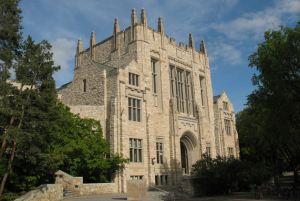July 17, 2012 – Researchers at the University of Saskatchewan have made a discovery about how marijuana  plants create tetrahydrocannabinol (THC) — the active ingredient in pot that gets smokers high.
plants create tetrahydrocannabinol (THC) — the active ingredient in pot that gets smokers high.
It turns out the chemical pathway to THC production involve two enzymes that are used in a way that hasn’t been seen before in plants, according to U of S biologist Jon Page.
“What cannabis has done is take a rare fatty acid with a simple, six-carbon chain and use it as a building block to make something chemically complex and pharmacologically active,” Page said in a news release.
The U of S research, published online Monday in the Proceedings of the National Academy of Sciences (PNAS), paves the way for the development of marijuana varieties that can make their own pharmaceuticals or industrial hemp that is completely drug-free, the scientists say.
Currently, industrial hemp, used to make rope and textiles, contains only residual quantities of THC. But even trace amounts can be problematic when it comes to export markets and drug regulators.
The answer, the U of S scientists believe, could be essentially switching off the chemical pathway.
“As breeders try to develop new varieties, they always struggle with this sort of residual or small amount of THC that always seems to leak through,” Page said. “So we might not just get really really low levels of THC; we’d get zero levels of THC.”
The researchers are also looking at ways to produce THC-like substances using yeast or other micro-organisms, something that would have applications in the manufacture of pharmaceuticals.
As far as using their discoveries to “turn up” the level of THC in cannabis?
Page says it’s unlikely the U of S work will have applications for recreational drug users. That’s because there already exist potent strains of marijuana through conventional production methods, he said. Source.
